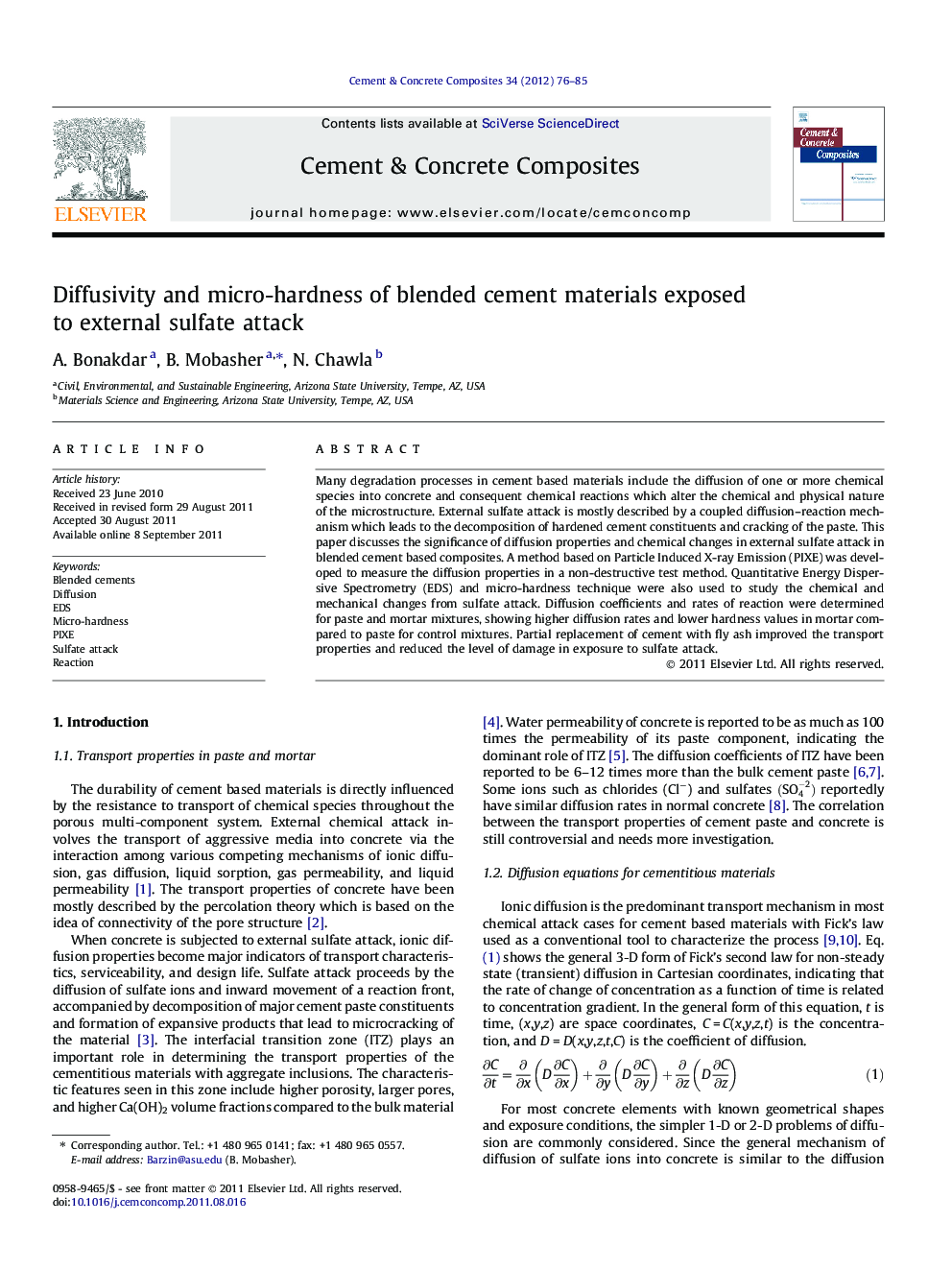| Article ID | Journal | Published Year | Pages | File Type |
|---|---|---|---|---|
| 1454976 | Cement and Concrete Composites | 2012 | 10 Pages |
Many degradation processes in cement based materials include the diffusion of one or more chemical species into concrete and consequent chemical reactions which alter the chemical and physical nature of the microstructure. External sulfate attack is mostly described by a coupled diffusion–reaction mechanism which leads to the decomposition of hardened cement constituents and cracking of the paste. This paper discusses the significance of diffusion properties and chemical changes in external sulfate attack in blended cement based composites. A method based on Particle Induced X-ray Emission (PIXE) was developed to measure the diffusion properties in a non-destructive test method. Quantitative Energy Dispersive Spectrometry (EDS) and micro-hardness technique were also used to study the chemical and mechanical changes from sulfate attack. Diffusion coefficients and rates of reaction were determined for paste and mortar mixtures, showing higher diffusion rates and lower hardness values in mortar compared to paste for control mixtures. Partial replacement of cement with fly ash improved the transport properties and reduced the level of damage in exposure to sulfate attack.
► The expansion in control mortar was about 10 times higher than the control paste. ► Fly ash blended mixtures were less sensitive to the aggregate addition. ► PIXE was found to be a useful NDT technique for measuring the diffusivity. ► Diffusion of Na and S and leaching of Ca and Si occurred during sulfate attack. ► Hardness increased in paste and decreased in mortar in the exterior layer.
